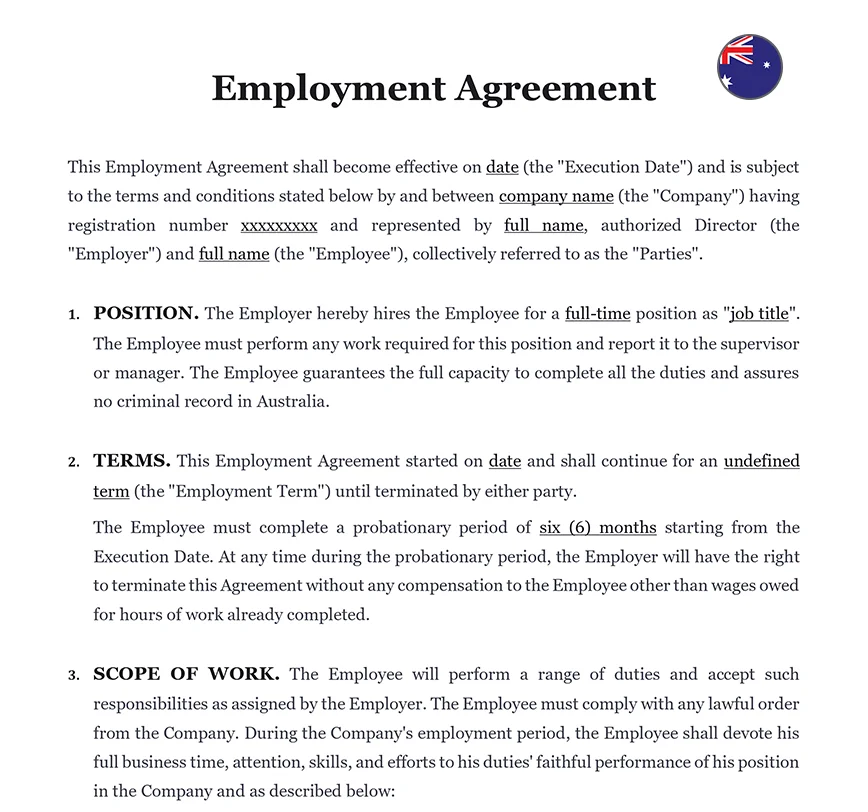Why an Employment Contract is Crucial
An Employment Contract is more than just a document, it’s a legally binding agreement that outlines the terms and conditions of employment between an employer and an employee. This contract is vital for protecting both parties’ rights and ensuring clarity on key issues such as job duties, compensation, and workplace policies. By having a well-drafted Employment Contract, businesses can avoid misunderstandings, reduce the risk of disputes, and ensure compliance with Australian employment laws.
When hiring in Australia, the legal landscape is complex, and it’s essential to get the Employment Contract right. This document should not only meet the basic legal requirements but also reflect the specific needs of the role and the expectations of the employer.
Understanding the Fair Work Act
The Fair Work Act 2009 is the cornerstone of employment law in Australia. It sets out the minimum standards for employment and provides a framework for managing workplace relations.
1.National Employment Standards (NES): The NES outlines ten minimum entitlements that must be provided to all employees, including leave entitlements, maximum weekly hours, and termination notice.
2. Modern Awards: These are legally enforceable documents that set minimum pay rates and conditions of employment for specific industries or occupations.
3. Enterprise Agreements: These are negotiated agreements between employers and employees that can offer conditions above the Modern Awards.
ℹ️ Employers must ensure that their Employment Contracts comply with the Fair Work Act and any applicable Modern Awards or Enterprise Agreements. This is crucial for avoiding legal issues and ensuring that employees are treated fairly.
Key Elements of a Hiring Employees
A comprehensive Employment Contract should include several key elements to ensure that both the employer and employee understand their rights and obligations.
1. Job Description: Clearly outline the role, responsibilities, and expectations of the employee.
2. Remuneration: Specify the salary, payment frequency, and any bonuses or commissions that may apply.
3. Working Hours: Define the expected working hours, including any provisions for overtime.
4. Leave Entitlements: Include details about annual leave, sick leave, parental leave, and any other applicable leave.
5. Termination and Notice: Outline the process for termination, including the notice period required by both parties.
Addressing Workplace Policies
Employee Handbook should be referenced in the document.
1. Code of Conduct: Establishes the expected behavior and standards in the workplace.
2. Confidentiality: Protects sensitive business information and trade secrets.
3. Health and Safety: Ensures compliance with occupational health and safety laws and outlines the responsibilities of both the employer and employee.
4. Dispute Resolution: Provides a process for resolving workplace disputes without resorting to legal action.
Non-Compete and Non-Solicitation Clauses
To protect your business interests, consider including non-compete and non-solicitation clauses in your Employment Contract.
| ➤ Non-Compete Clause: Prevents the employee from working for a competitor or starting a competing business for a specified period after leaving your company. |
| ➤ Non-Solicitation Clause: Restricts the employee from soliciting your clients or other employees for their benefit after leaving the company. |











